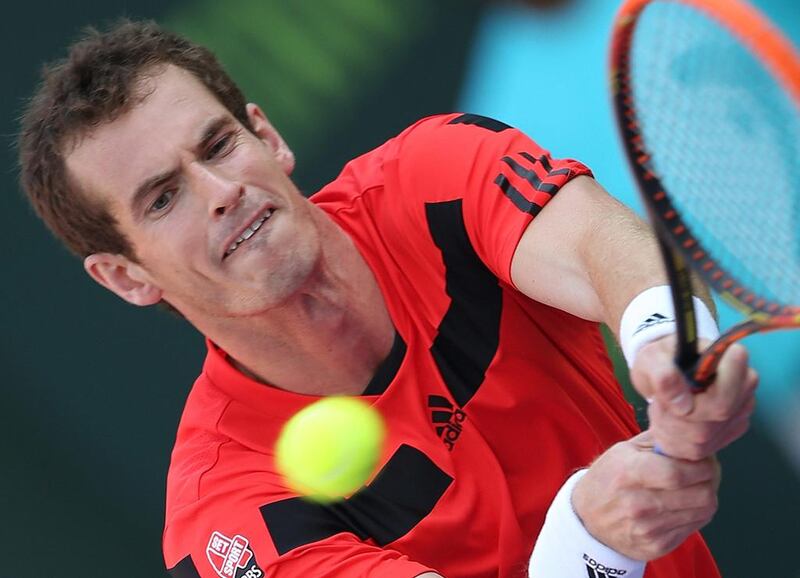DOHA // Andy Murray suggested that he can be better than when he won Wimbledon, moments before taking little more than half an hour to win his first ATP match in four months yesterday.
Murray, a 6-0, 6-0 winner against overmatched Mousa Zayed in the first round of the Qatar Open, is making a comeback from surgery on a back injury.
Even when winning at Wimbledon against Novak Djokovic in July, he was battling physical discomfort.
But the brief evidence yesterday’s mismatch over a local wild-card entry is that the surgery may have been a success, and that both his freedom of movement and his potential may have improved.
For the moment, though, Murray’s words suggest more than his actions.
“I guess with most surgeries, you are trying to be better than you were before – and so far the results have been good,” he said. “I haven’t lost any strength, I was training two weeks after the surgery, I was on the bike and everything has been going well.
“I don’t feel like I’ve lost speed, or strength. But I will know better when I’m playing matches against the best players in the world. It’s one thing doing all this stuff in the gym and in practice, but until I start doing it in matches – that’s where the confidence will come from.”
Murray has not detailed the nature of the surgery, which came soon after he became the first British player in 77 years to win Wimbledon.
“It’s quite difficult to explain,” he said. “There’s a lot of things which were a problem. But what exactly the one thing that it was, you know, I may not necessarily know, but I am hoping that the procedure I had done works.
“I was getting a lot of pain in my lower back, down my leg and into my foot. They were the symptoms I had, but they could have been caused by quite a few different things.”
Asked how he coped with such discomfort at Wimbledon, he said: “I don’t want to go into what shots it was hurting on, but the surface helped. The lower bounce, the quicker court – you don’t have to generate and rotate as much to generate the power.”
A likely outcome of that memorable triumph is that Murray’s acclaim will continue to increase as time passes. He is already more popular now than then, and far more celebrated than two years ago.
“In the last couple of years, the support has been getting better and better, and it does make a big difference when you are playing Wimbledon, or Olympics, or Davis Cup,” he said.
“And I’ve played pretty much my best tennis in those situations when I have had the crowd with me.”
Two weeks ago, he was named the sports personality of the year by the BBC, while he was training in Miami.
“I would have liked to have been there, but now everyone understands what my priorities are and it was something that I couldn’t do,” he said.
It also implied that there is a growing understanding and appreciation of a personality which, in his younger days, could seem shy, which in his early years might have appeared dour and guarded, and which is more often now seen as loyal, dedicated and tenacious.
“Obviously, the awards and stuff would suggest that,” he said. “But the best people to ask are the public.
“I don’t feel like it’s me that’s best to answer that. You know winning those sort of awards suggests that it [the public attitude] has changed a bit and I hope it continues.”





